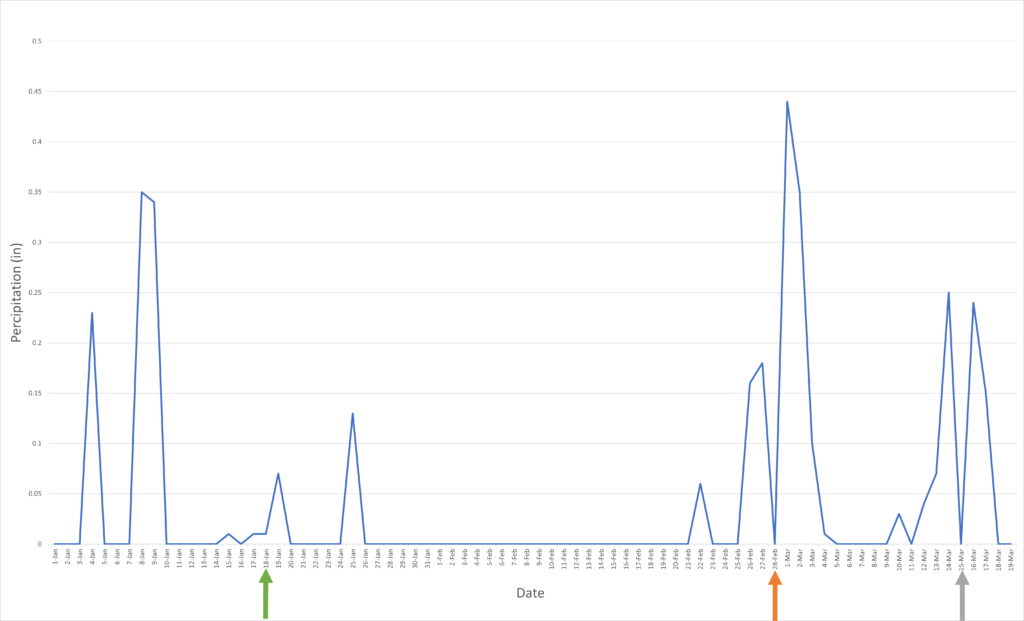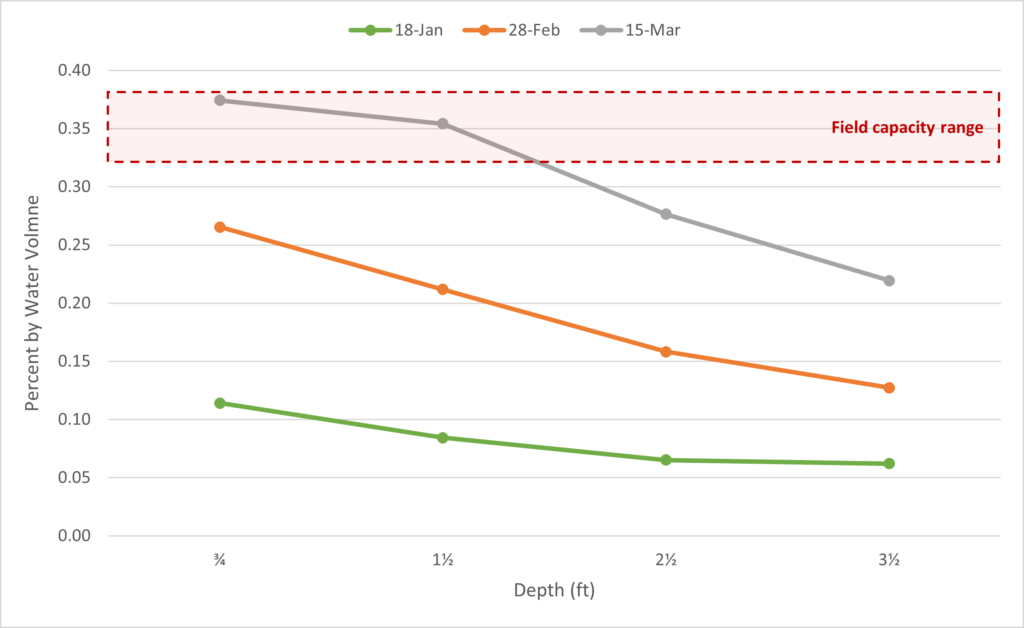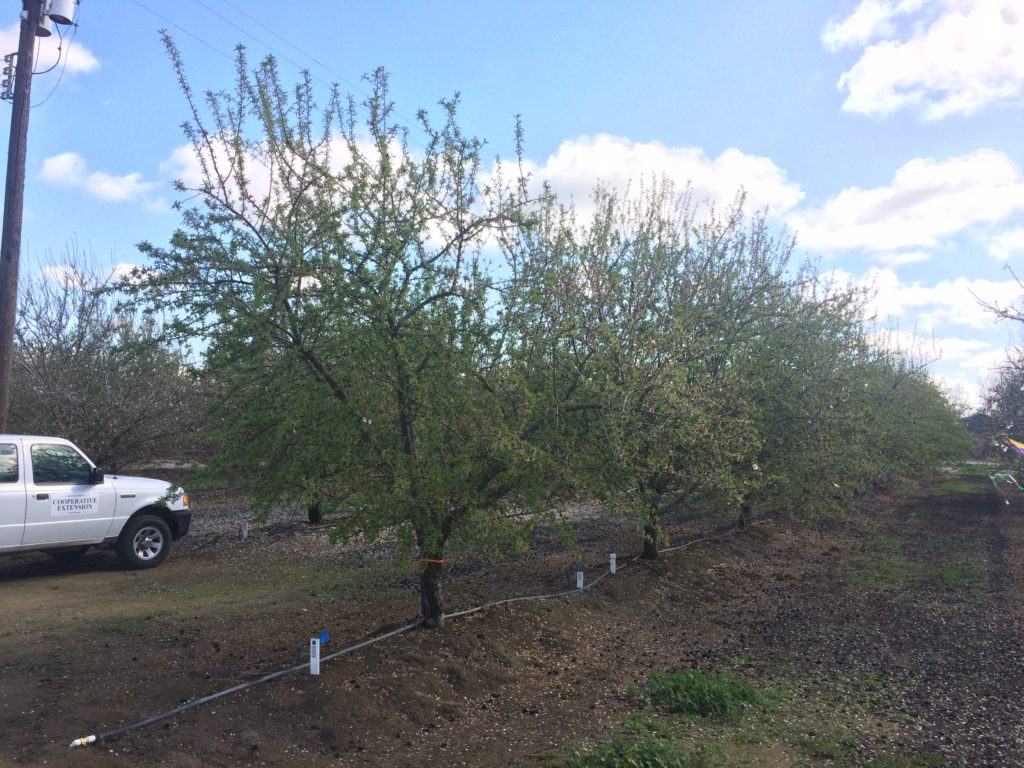The rainy season this year in the San Joaquin Valley has been fairly dry and has probably got many growers thinking about how much water they should start applying. In orchards, one consideration to add to the list is the soil moisture at deeper depths. As an example, let us look at information from a wetter rainy season in 2018. In the beginning of that year, soil moisture measurements were collected every month at a research site in Parlier, CA.


While not extensive, it does show something interesting. Overall, the soil moisture increased at all depth month to month (i.e., green line to orange then to grey). By March, the soil moisture above 1½ feet reached the maximum wetness the soil could hold, called the field capacity (e.g., red box in image). However, no matter how much it rained, the soil moisture at and below 2½ feet consistently stayed below the field capacity.
The trees at this location were planted in 2009 with a rootzone well past a five-foot depth and were beginning to leaf-out by the middle of March.

While trees typically transpire much of its water needs from the upper portion of the rootzone, a decent amount is still absorbed from the lower portion. At this site, the soil moisture at and below the 2½ feet may not be enough to supply the water needs of the trees even with appropriate moisture in the topsoil.
When scheduling your first few irrigations realize that you may have different soil moisture at different depths. A few minutes with an auger and using the “feel” test or looking at sensor data can give an idea of the soil moisture profile across all depths. Think about the size of your tree’s rootzone, the soil types in your field, and how wet the soil is at shallow and deeper depths. Then plan your early-season irrigation on these and the other factors you consider.
Thank you to Brent Holtz (Farm Advisor in San Joaquin County) for allowing us to take measurements in a research site he manages.
The Almond Doctor Field Note is a series of posts that will cover observations made from the field by staff research assistants of the University of California Cooperative Extension office of Merced County. While Field Note posts may reference completed or on-going research, its intent is share notable observations from the field, not to summarize research findings or describe current recommended farming practices.

